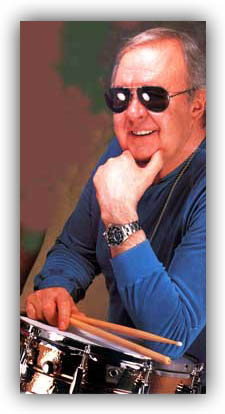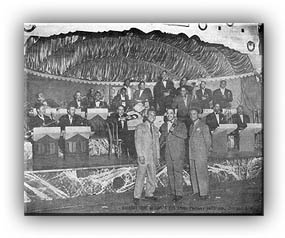
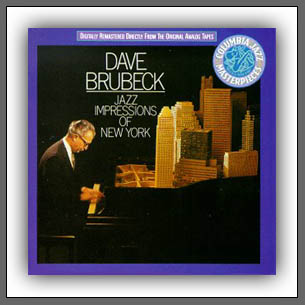
track 1. Theme from "Mr. Broadway": track 2. Broadway Bossa Nova: track 3. Autumn In Washington Square: track 4. Something To Sing About: track 5. Sixth Sense: track 6. Spring In Central Park: track 7. Lonely Mr. Broadway: track 8. Summer On The Sound: track 9. Winter Ballad: track 10. Broadway Romance: track 11. Upstairs Rumba:
track 1. Theme from "Mr. Broadway": track 2. Broadway Bossa Nova: track 3. Autumn In Washington Square: track 4. Something To Sing About: track 5. Sixth Sense: track 6. Spring In Central Park: track 7. Lonely Mr. Broadway: track 8. Summer On The Sound: track 9. Winter Ballad: track 10. Broadway Romance: track 11. Upstairs Rumba:
track 1. Theme from "Mr. Broadway": track 2. Broadway Bossa Nova: track 3. Autumn In Washington Square: track 4. Something To Sing About: track 5. Sixth Sense: track 6. Spring In Central Park: track 7. Lonely Mr. Broadway: track 8. Summer On The Sound: track 9. Winter Ballad: track 10. Broadway Romance: track 11. Upstairs Rumba:
track 1. Theme from "Mr. Broadway": track 2. Broadway Bossa Nova: track 3. Autumn In Washington Square: track 4. Something To Sing About: track 5. Sixth Sense: track 6. Spring In Central Park: track 7. Lonely Mr. Broadway: track 8. Summer On The Sound: track 9. Winter Ballad: track 10. Broadway Romance: track 11. Upstairs Rumba:
track 1. Theme from "Mr. Broadway": track 2. Broadway Bossa Nova: track 3. Autumn In Washington Square: track 4. Something To Sing About: track 5. Sixth Sense: track 6. Spring In Central Park: track 7. Lonely Mr. Broadway: track 8. Summer On The Sound: track 9. Winter Ballad: track 10. Broadway Romance: track 11. Upstairs Rumba:
track 1. Theme from "Mr. Broadway": track 2. Broadway Bossa Nova: track 3. Autumn In Washington Square: track 4. Something To Sing About: track 5. Sixth Sense: track 6. Spring In Central Park: track 7. Lonely Mr. Broadway: track 8. Summer On The Sound: track 9. Winter Ballad: track 10. Broadway Romance: track 11. Upstairs Rumba:

track 1. Theme from "Mr. Broadway": track 2. Broadway Bossa Nova: track 3. Autumn In Washington Square: track 4. Something To Sing About: track 5. Sixth Sense: track 6. Spring In Central Park: track 7. Lonely Mr. Broadway: track 8. Summer On The Sound: track 9. Winter Ballad: track 10. Broadway Romance: track 11. Upstairs Rumba:
track 1. Theme from "Mr. Broadway": track 2. Broadway Bossa Nova: track 3. Autumn In Washington Square: track 4. Something To Sing About: track 5. Sixth Sense: track 6. Spring In Central Park: track 7. Lonely Mr. Broadway: track 8. Summer On The Sound: track 9. Winter Ballad: track 10. Broadway Romance: track 11. Upstairs Rumba:
track 1. Theme from "Mr. Broadway": track 2. Broadway Bossa Nova: track 3. Autumn In Washington Square: track 4. Something To Sing About: track 5. Sixth Sense: track 6. Spring In Central Park: track 7. Lonely Mr. Broadway: track 8. Summer On The Sound: track 9. Winter Ballad: track 10. Broadway Romance: track 11. Upstairs Rumba:
|
Jazz Impressions Of New York Dave Brubeck
Columbia Records
piano - Dave Brubeck
producer - Teo Macero
| Dave Brubeck's Original 1964 LP Liner Notes... |
_____Musical producer Robert Israel assured me that I could approach "Mr. Broadway" much as I had approached such albums as "Jazz Impressions of Eurasia", "U.S.A.", and "Japan", and that I should feel free to write full-length tunes from which cues and other background material could be developed. _____My assignment, basically, was to capture the rhythm and atmosphere of New York City. But there were specific musical problems too. _____Task Number 1 : Theme music. How do you portray in 40 seconds the urbane personality of Mr. Broadway (Craig Stevens), and at the same time write a signature that is immediately recognizable as Brubeck? I decided on a basic polyrhythmic approach to "Theme from Mr. Broadway" because The Quartet has been long identified with the jazz waltz and unusual time signatures. Also, inherent in multiple rhythms is an inner pull which creates conflict and dramatic excitement on a sophisticated level. Once settled upon this polyrhythmic approach to "Theme from Mr. Broadway", I wrote four different counter melodies related to it: an eery 12-tone melody, two blues themes, and a light-hearted baroque melody. These counter melodies played either alone or simultaneously with the original theme are the backbone of the television score. The two blues counterthemes are included in The Quartet version of "Theme from Mr. Broadway". _____Throughout the music I tried to create a sense of the multiplicity and range of mood and action in the life of a New Yorker. There are, for example, four waltzes,
"Autumn In Washington Square", "Winter Ballad", _____Various facets of the New York personality were another idea source. Seeing in Mr. Broadway the essence of urbanity, sometimes sentimental, sometimes tough, occasionally romantic or suave as the occasion demands, these characteristics are sketched in various pieces. "Broadway Basso Nova", cool and sophisticated; "Lonely Mr. Broadway", at that hour of quiet between club closing and crunching garbage trucks; and "Broadway Romance", as full of sentiment as romance in Indiana. _____Certain tunes, to be sure, are derived from specific scenes and situations. Garson Kanin's lyric, for example, suggested "Something To Sing About", which was the title song for the "Mr. Broadway" episode starring Lauren Bacall. The intuitive sleuthing quality of "Mr. Broadway" (sometime detective) is the point of reference for "Sixth Sense", a sort of musical pun in that the tune is based on a series of major and minor sixths. _____The exciting and sometimes frenetic pace of Manhattan life is conjured up in "Upstage Rumba", which I conceived as an unusual combination of Latin rhythms and a 12-tone melody. But The Quartet version of this piece actually evolved in the studio when each person upstaged the other by unexpectedly doing something quite out of character. _____As you can imagine, music for the television series ran the gamut of emotions and moods from "horror" to "flippant," "romantic" to "violent," and are so described on studio worksheets. The locale assignments ranged from nightclubs to churches, Greenwich Village to Harlem, Japanese to Latin. Ideas come easily from every source - words, situations, places, characters - all stamped with the personality of The City itself. Together they form a concept which paints a musical backdrop for television's "Mr. Broadway". Extended, varied and developed as individual compositions by The Quartet, they become "Jazz Impressions Of New York". ( ..Dave Brubeck - 1964.. ) | |
|
Liner note contribution from R.A. Israel (music producer of the television series "Mr. Broadway") | |
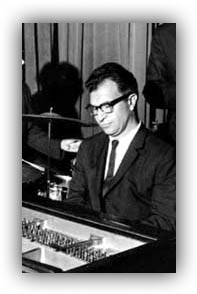 The saga of the development and fruition of a new television series, or its demise, is an old tale by now. However, Dave's association with the "Mr. Broadway" project and the emergence of the incredible music that he wrote for the project does bear some retelling. I was at once struck by Dave's unreserved fascination and enthusiasm for the film media, which was totally new to him. Few film enthusiasts or television viewers realize the amount of anguish, creative sweat, and sheer physical labor involved in the months of preparation that goes into the making of a feature or a television series. Dave Brubeck is literally an endless source of melodic and rhythmic invention, and he applied his gifts to this project with a zeal that was truly overwhelming. Every characteristic of the series, from the suave leading man and his pert Japanese Girl Friday to the restless glamor of the city (in this case New York), came under his musical scrutiny. Melodies poured out of Dave, and working closely with him in the secluded quiet of his country home I continuously wondered at the seemingly endless flow of invention. Our biggest problem was to decide upon and select out of the many hours of ideas the finest material for the project. This collection represents a sampling of the music originally created for "Mr. Broadway". It stands on its own strength as pure Brubeck jazz. However, it also represents a new point of departure for Dave Brubeck as a jazz writer of original film music. It is my belief that long after our efforts are assigned to memory this music will be heard again and again. The saga of the development and fruition of a new television series, or its demise, is an old tale by now. However, Dave's association with the "Mr. Broadway" project and the emergence of the incredible music that he wrote for the project does bear some retelling. I was at once struck by Dave's unreserved fascination and enthusiasm for the film media, which was totally new to him. Few film enthusiasts or television viewers realize the amount of anguish, creative sweat, and sheer physical labor involved in the months of preparation that goes into the making of a feature or a television series. Dave Brubeck is literally an endless source of melodic and rhythmic invention, and he applied his gifts to this project with a zeal that was truly overwhelming. Every characteristic of the series, from the suave leading man and his pert Japanese Girl Friday to the restless glamor of the city (in this case New York), came under his musical scrutiny. Melodies poured out of Dave, and working closely with him in the secluded quiet of his country home I continuously wondered at the seemingly endless flow of invention. Our biggest problem was to decide upon and select out of the many hours of ideas the finest material for the project. This collection represents a sampling of the music originally created for "Mr. Broadway". It stands on its own strength as pure Brubeck jazz. However, it also represents a new point of departure for Dave Brubeck as a jazz writer of original film music. It is my belief that long after our efforts are assigned to memory this music will be heard again and again.( ..R.A. Israel - Series Music Director.. ) | |
| Liner note contributions from the producers of the TV program... | |
from David Susskind...
from Daniel Melnick...
from Larry Arrick...
| |
|
| |
Dave Brubeck: a bio
_____If Dave Brubeck was the atypical jazzman in the 50's, it was due to the unique route he took to stardom. Born in 1920 in Concord, California, Dave Brubeck's mother, a piano teacher herself, exposed him early to music. But while she was able to wean his two older brothers on her favoured classical music, she could never dissuade young Dave Brubeck from banging out his own selections and popular tunes, which he began doing when he was four. Despite (or maybe because of) the prevalence of musicians in the household (his brothers would later become dean of Palomar College and head of the Santa Barbara High School music department), Dave Brubeck didn't harbour dreams of becoming a professional musician - he wanted instead to become a rancher. With the family's move to a ranch in the foothills of the Sierras near Ione, California, when he was 11, Dave Brubeck became enamoured with life on the ranch and relished its daily chores. Dave Brubeck still enjoyed playing the piano, but to his mother's vocational overtures he responded: College Years: Early Career: First Successes: The Classic Quartet: _____In 1959 The Quartet released Time Out, a collection of songs which experimented with different time signatures, which included the hits "Take Five" and "Blue Rondo à la Turk". "Take Five", which soon became Dave Brubeck and The Quartet's signature tune, was officially composed by Paul Desmond but derived from Joe Morello's original 5/4 beat. The composition can be read as a conciliatory act between the two previously feuding bandmates. "Blue Rondo à la Turk" was a venture into 9/8 time and a play on Wolfgang Mozart's "Rondo alla Turca". The wild success of the album and "Take Five" in particular catapulted The Quartet and its leader beyond simply the temporal successes of the day and into the permanent jazz canon. The Quartet continued to produce popular jazz albums, including the inevitable Time Further Out which experimented further with nontraditonal meter. Dave Brubeck himself, however, seized upon his popularity to branch out into other projects and expand upon his aspirations of being a composer in other realms. In 1960, a ballet he wrote entitled Points on Jazz was accepted into the repertory of The American Ballet Theatre. Dave Brubeck wrote the score for The Real Ambassadors, an attempt to infuse a Broadway show with the emotions of jazz and its players, and its performance at the 1962 Monterey Jazz Festival with Louis Armstrong is remembered as a seminal event in the history of that venerable annual show. _____As Dave Brubeck reached across boundaries to introduce jazz to different disciplines, The Quartet reached around the world to introduce jazz into new countries, touring extensively in Europe and Asia. Indeed, the popularity of The Dave Brubeck Quartet overseas was so widespread that longtime Dave Brubeck supporter and comedian Mort Sahl remarked that "...whenever John Foster Dulles visits a country, the State Department sends that Brubeck Quartet in a few weeks later to repair the damage...". The Dave Brubeck classic "Blue Rondo à la Turk" was in fact composed when the band was touring in Turkey and was based on a traditional Turkish 9/8 meter, and The Quartet released a collection of selections recorded on the Continent as The Dave Brubeck Quartet in Europe in 1958 and Jazz Impressions of Eurasia, recorded after an extended tour in Eastern Europe and The Middle East in 1958. Although The Quartet enjoyed continued success, their development soon began to diverge from that of mainstream jazz, and they disbanded in 1967, regrouping only once in 1976 for a twenty-fifth anniversary tour. Later Career: _____A change in Dave Brubeck's outlook is apparent in his development from the days of 'The Classic Quartet', to his later work. In the early days, the only written parts of the tunes were the short intro and conclusion and a sketchy chord progression, and Dave Brubeck confessed that 90 percent of the notes the group played occurred to them as they played. Despite this reliance on improvisation, he still received ample criticism that he couldn't swing (a hallmark of jazz up to the 1950's), to which he responded that "...any jackass can swing. But to try something new and swing at the same time, that's hard...". But as he continued to develop, he came to realize his dreams of being a composer, and his later work (other than strictly jazz tunes) relies more and more on written composition. _____Despite his obvious successes, critics often refuse to acknowlege Dave Brubeck's importance in the development of jazz music, alluding to his abundant popular success as a mark of a want of merit. Yet regardless of the critics' subjective assessment of the merit of his contribution to the jazz idiom, he is arguably responsible for initiating more listeners into the art of jazz - a legacy more fruitful and healthy for jazz music as a whole than most. | |
|
| |
|
Joe Morello: a bio
George Lawrence Stone was so impressed with Joe Morello's ideas that he incorporated them into his next book, "Accents & Rebounds", which is dedicated to Joe Morello. _____After moving to New York City, Joe Morello worked with an impressive list of jazz musicians including Johnny Smith, Tal Farlow, Phil Woods, Gil Mele and Stan Kenton. While working with Marian McPartland at "The Hickory House", Joe Morello's technical feats attracted the attention of a legion of drummers, who would crowd around him at a back table during intermissions to watch him work out with a pair of sticks on a folded napkin. Jim Chapin tells stories about unsuspecting drummers who would try to impress Joe Morello by showing off their fancy licks. _____His 12-year stint with Dave Brubeck made Joe Morello a household name in the jazz (and drumming) world, and on the quartet's recording of "Take Five" he performed one of the most famous drum solos in jazz history. "...When people use the word 'technique,' they usually mean 'speed'...", Joe Morello says, commenting on the solo. "...But the 'Take Five' solo had very little speed involved. It was more about space and playing over the barline. It was conspicuous by being so different..." _____After leaving Dave Brubeck in 1968, Joe Morello became an in-demand clinician, teacher and bandleader. He has appeared on over 120 albums, including his own 1993 release Going Places on DMP. He has written several drum books, including "Master Studies", published by 'Modern Drummer Publications', and has done an instructional video for 'Hot Licks' entitled "The Natural Approach to Technique". Joe Morello has won countless music polls over the years, and was elected to 'The Modern Drummer Magazine Hall of Fame' in 1988. _____Due to his failing eyesight (he went blind in 1976), Joe Morello has mostly worked as a drum instructor since (Danny Gottlieb was a student), but still plays and participated in reunions with Dave Brubeck and Marian McPartland. | |
|
| |
Paul Desmond: a bio
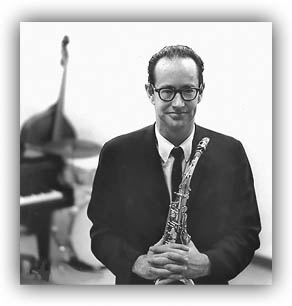 of their generation not directly influenced by Charlie Parker. Paul Desmond was influenced by Lester Young, but took it further, into melodic and harmonic worlds never before traveled by reedmen - especially in the upper registers. of their generation not directly influenced by Charlie Parker. Paul Desmond was influenced by Lester Young, but took it further, into melodic and harmonic worlds never before traveled by reedmen - especially in the upper registers._____Paul Desmond is best known for his years with The Dave Brubeck Quartet (from 1959 to 1967) and his infamous composition "Take Five". He met Dave Brubeck in the late 1940s and played with his Octet. The Dave Brubeck Quartet formed toward the end of 1950 and took final shape with Eugene Wright and Joe Morello a few years later. Jazz at Oberlin and Time Out were considered essential purchases by college students of the era, but Jazz Impressions of Japan was its most innovative recording. Paul Desmond played his loping, slow, ordered, and intricate solos in direct contrast to the pianist's obsession with large chords, creating a myriad of textures for melodic and rhythmic counterpoint unlike any heard in jazz. His witty quotations from musicals, classical pieces, and folk songs were also a watermark of his artistry. _____When The Dave Brubeck Quartet split in 1967, Paul Desmond began an intermittent yet satisfying recording career. It included dates with Gerry Mulligan for Verve®, various sessions with Jim Hall, and a concert with The Modern Jazz Quartet. He played his last gigs with The Dave Brubeck Quartet at reunions before dying of lung cancer in New York City in 1977. | |
|
| |
Eugene Wright: a bio
_____Eugene Wright studied cornet in high school. He led a 16-piece band, The Dukes of Swing, in the mid and late 1940s. Eugene Wright played with Gene Ammons, Count Basie and Arnett Cobb in the late 1940s and early 1950s, _____Eugene Wright worked in television studios and did film soundtrack work as well as play in clubs during the 1970s. He also did private teaching, and became head of the advisory board in the jazz division of The International Society of Bassists, and head of The University of Cincinnati's jazz department. Unfortunately, there are no sessions of Euguene Wright as leader, but he can be heard on numerous Dave Brubeck and Paul Desmond sessions. | |
|
| |
|
OnLinerNotes - JAZZ | |
|
| |
|
|
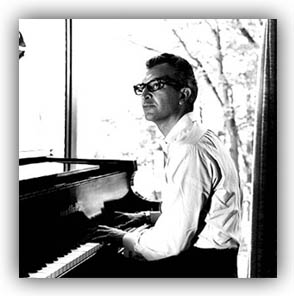
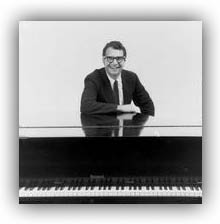
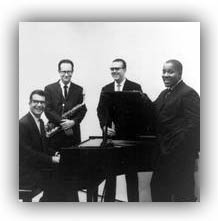
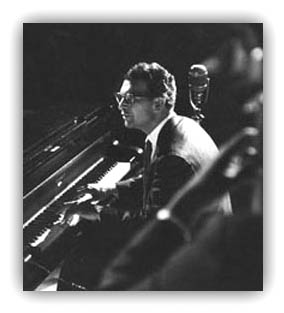
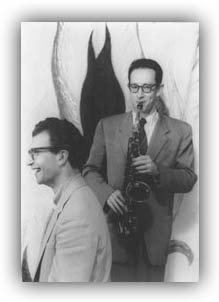
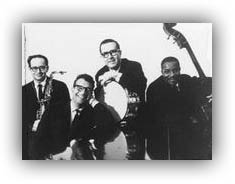
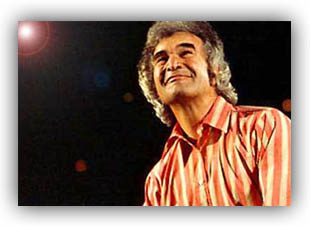
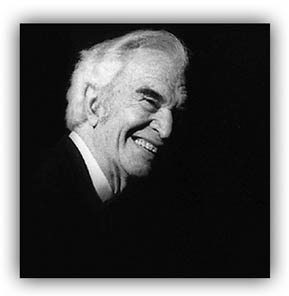
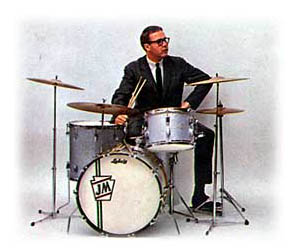 Later, Joe Morello studied with Radio City Music Hall percussionist Billy Gladstone, one of the most technically advanced drummers of all time.
Later, Joe Morello studied with Radio City Music Hall percussionist Billy Gladstone, one of the most technically advanced drummers of all time.
